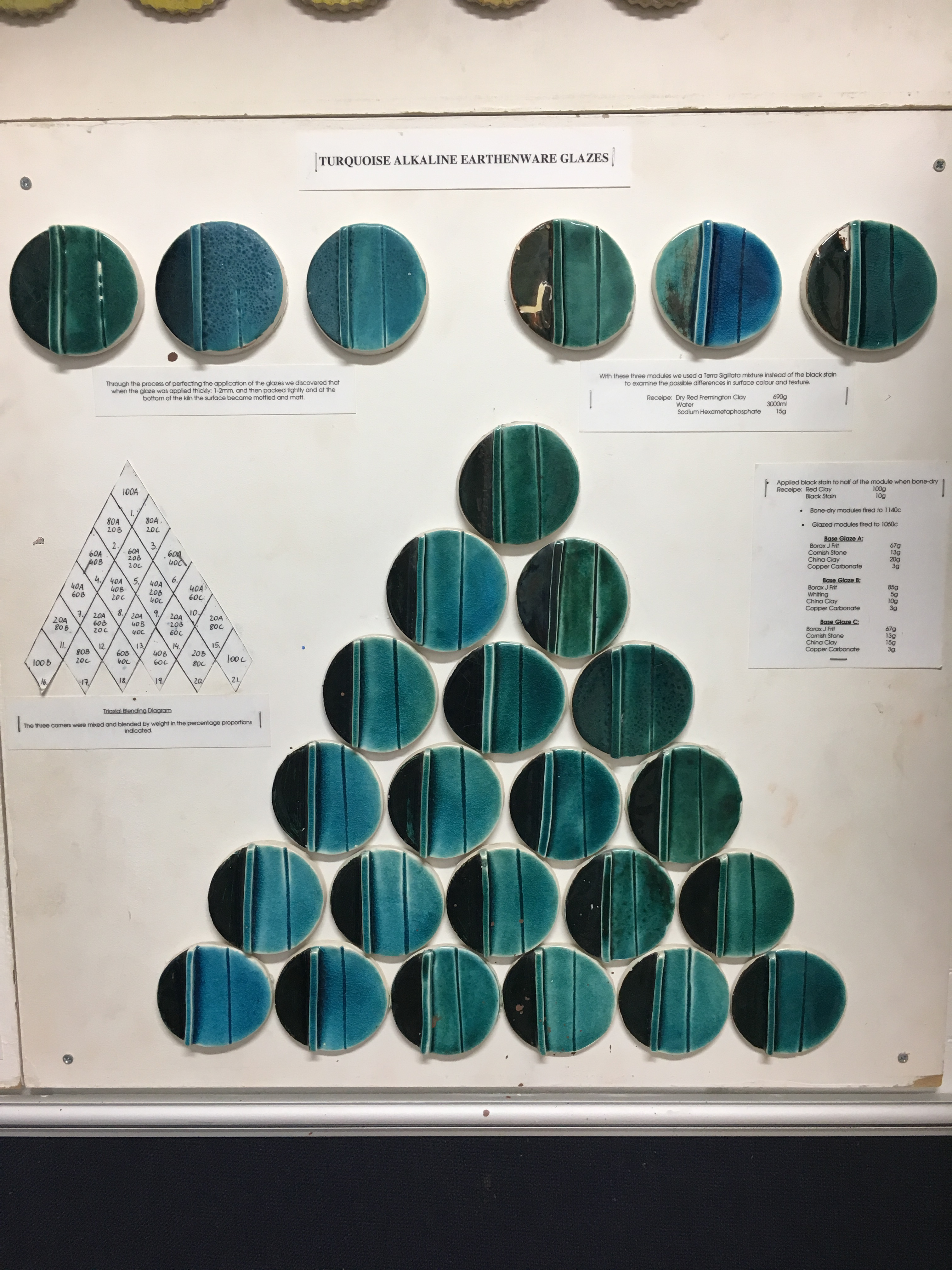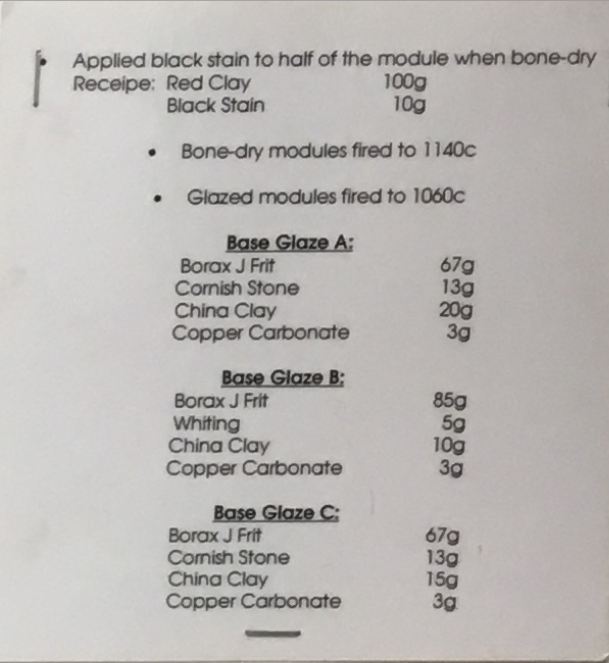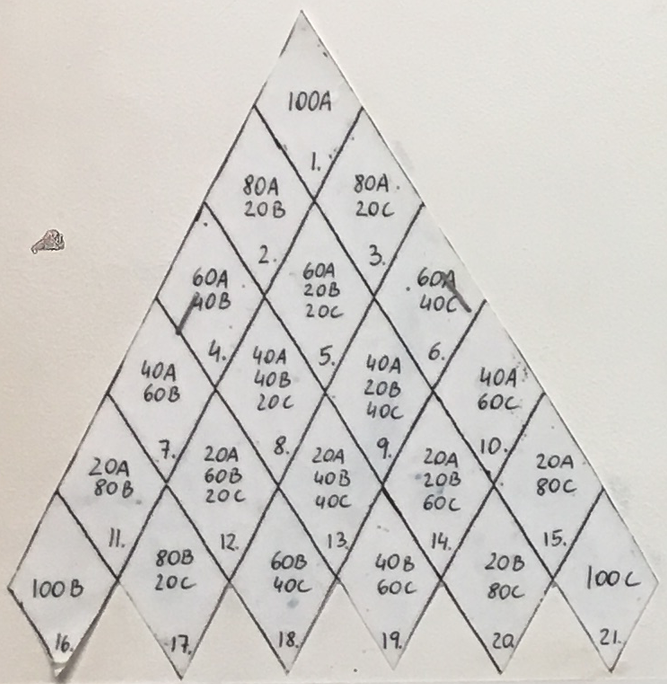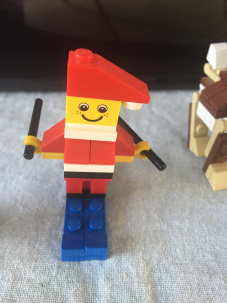In the weeks to come we will be engaging in the skill of glazing alchemy. Our first steps have been to make up test tiles, out of white/red earthenware and St Thomas Porcelain/Reduction St Thomas. The next step was to select some glazes to mix up and test.
Going into this project I already have great ambitions as I have been looking into the use of a particular rare earth oxide and its potential to react to fluorescent lighting. The oxide in question is called Neodymium Oxide and is used in glass to create “CFL Reactive” colours in a wide spectrum and the science is not explained in great detail. Only a small amount of ceramicists that I’ve seen have explored it’s incredible properties.
I have picked an earthenware recipe on display in the ceramics workshop at CSAD. The reason I chose this glaze were because of its particularly glassy qualities.


 I am particularly interested in mix B.
I am particularly interested in mix B.
Instead of using copper carbonate I will be using Neodymium Oxide at 6%. I used a video youtube which you can watch here as reference for my choice. The artist tested Neodymium oxide in a mid range glaze recipe from 1-9% he yielded best results at around 8% but the colour started to show at 6% so that is where I shall start.
I have taken my stoneware recipe from a post on the Ceramics Art Daily website which you can read here. I intend to use the Celedon type glazes referenced there. Again I would like to use Neodymium as the colourant. Is also advises using something like bentonite to stop it from settling. I had been given this advice from a member of the INC. Space at CSAD named Nathan Mullis who works with Lanthanides in his practice. I may try and incorporate this into the earthenware glaze.

I had not heard of some of these ingredients so I decided to research their chemical name.
- Wollastonite = Calcium Metasilicate
- Custer Feldspar = I think this could refer to Potash Feldspar
- Zircopax = Zirconium Silicate or Zircon
- Veegum T = Smectite (same family as Bentonite and Hectorite)
Note: I have read that Iron cancels out the colour of Neodymium turning it grey, so it will be interesting to see how these glazes react on the red earthenware and the reduction St Thomas.
Advertisements Share this:




